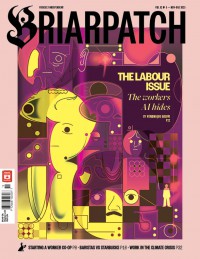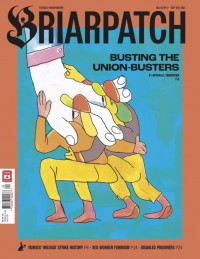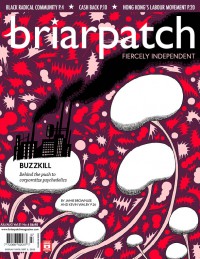-
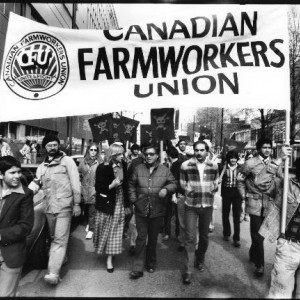 Magazine
MagazineThe colour of food
Farm workers and their unions have always been at the forefront of the battle to reduce the toxic pesticides served on our fruits and vegetables, fighting for environmental food standards before most consumers were aware of the concept of organic food. Yet today, many food activists seem concerned solely about directly supporting their local farmer, with farm workers’ conditions absent from the seasonal garden tour map.
-
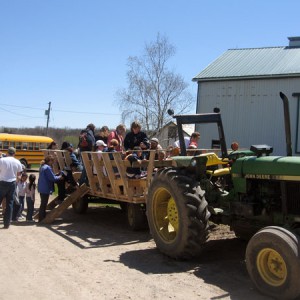 Magazine
Magazine‘Play in the Hay’ and other agricultural ventures
While there is a long history of some agri-tourist ventures like pick-your-own fruit farms, contemporary agri-tourist ventures are responding to specific contemporary realities: urban ignorance about food production and the economic need to instill a love and appreciation for local food in local customers.
-
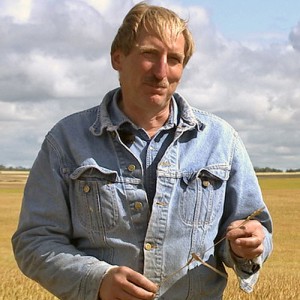 Magazine
MagazineIn defence of the Canadian Wheat Board
Agriculture Minister Gerry Ritz and Prime Minister Stephen Harper have declared they will end the Canadian Wheat Board single desk in August 2012. Recklessly turning the clock back a hundred years, this move will leave farmers at the hands of the robber barons of the grain trade who are already more powerful than ever before.
-
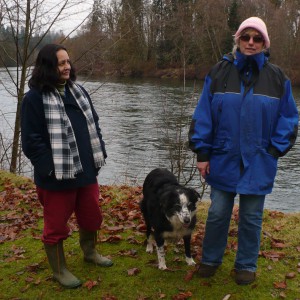 Magazine
MagazineFrom the ground up
On the West Coast, agriculture has always taken a back seat to logging, which has generated a lot of money for folks in these company towns. Now, as the export-the-trees-and-import-everything-else economy seems to be running out of steam, there’s renewed interest in small-scale farming as both a way to make a living and as a community resource. And in contrast to the decades of focus on the male-dominated forest industry, this movement is in many cases being led by women.
-
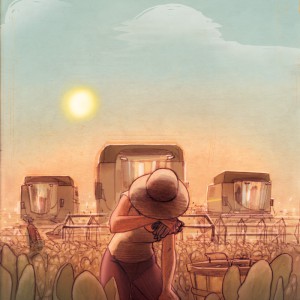 Magazine
MagazineRoom and board
There are three things a farmer can’t live without: a wheelbarrow, a dog and a pry bar.” Maggie called this to me from just outside the barn, where she stood offering me the said pry bar. The dog looked up from where she lay lounging in the shade, and I paused where I crouched, preparing to heave a sizable boulder into the aforementioned wheelbarrow.
-
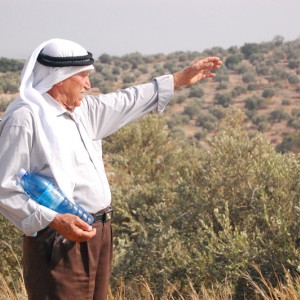 Magazine
MagazineAgriculture under apartheid
As the boycott of Israeli goods continues to gain momentum in the Occupied Palestinian Territories and worldwide, Palestinian farmers are extricating themselves from the Israeli economy and building self-reliance through community-supported agriculture.
-
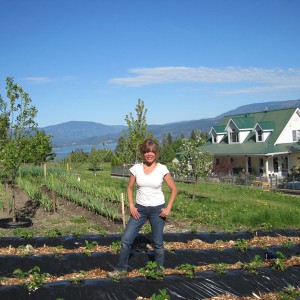 Magazine
MagazineDe-linking from dependency
The concept of indigenous food sovereignty represents a policy approach that extends the concept of food security through honouring the wisdom and values of indigenous knowledge in maintaining responsible relationships with the land.
-
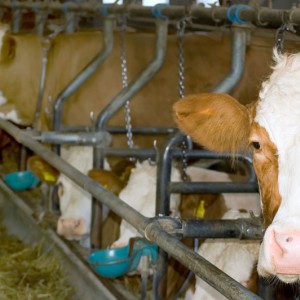 Magazine
MagazineBreeding disease
Many Canadians first learned of flesh-eating disease or necrotizing fasciitis in 1994 when then-Bloc Québécois leader Lucien Bouchard lost his leg, and very nearly his life, to the affliction. Media reports of Bouchard’s brush with death described the disease as “extremely rare.” It was at the time, but has since become more commonplace.
-
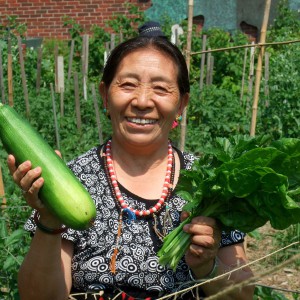 Magazine
MagazineCultivating community
Nestled in a small park in the bustling central Toronto neighbourhood of Parkdale is a community garden project that is improving the health of the environment, the neighbourhood and the gardeners involved by reducing the social isolation and homogenization that often come with gentrification.
-
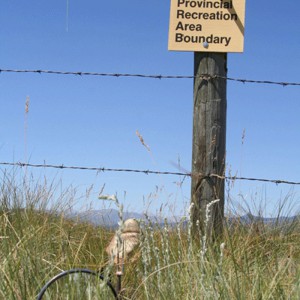 Magazine
MagazineThe Aeolian Recreational Boundary Institute
Barbed wire fences are ubiquitous on the prairie landscape. They symbolize domination of the land, ownership, entitlement and control. Wire fences are a western settlement paradigm that was brought to North America by settlers and land surveyors who sought to tame the limitless territory with mathematical delineations of latitude and longitude and monetary measures of land value.
-
 Magazine
MagazineSalt and earth
I first visited Whole Village in April 2007; over the course of the next 18 months, I lived on the farm in installations, working the land to earn my keep while photographing the community.
-
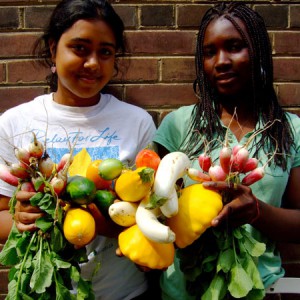 Magazine
MagazineLetter from the editor
From the outbreak of listeriosis in Canada to the eruption of food riots across the global south, from the eating of mud cakes in Haiti to stave off hunger pangs to the growing of Canadian crops to fuel our vehicles, there is perhaps no more politically charged issue today than food – how it is grown, who controls its processing and distribution and who eats what (or who doesn’t eat at all).
-
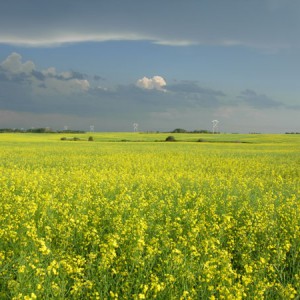 Magazine
MagazineFrom the world’s breadbasket to the empire’s fuel tank
In the first half of 2008, Parliament Hill was the scene of a heated battle over the future of agriculture in Canada. The victor’s spoils: Bill C-33, an Act that would amend the Canadian Environmental Protection Act to give the federal government the power to mandate five per cent ethanol content in gasoline and two per cent biodiesel in transportation and home heating fuel.
-
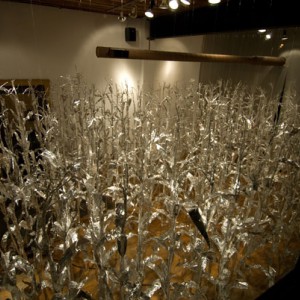 Magazine
MagazineGenetic modification “inherently unsafe”
Jeffrey M. Smith is the Executive Director of the Institute for Responsible Technology and is an international bestselling author on the health risks of genetically modified foods.
-
 Magazine
MagazineFeeding the world and cooling the planet
They numbered almost 650, from 86 countries and five continents, when they arrived in Maputo, the capital of Mozambique. They were delegates, support teams and special guests of the Fifth International Conference of La Vía Campesina, which took place from October 16 to 23, 2008. To reach Maputo, most of the delegates had made a considerable economic and human effort. Maputo is not a city you get to easily.
-
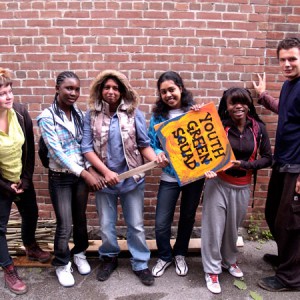 Magazine
MagazineEat, play, live
The origins of Food Not Bombs are somewhat mysterious: some report that a bake sale to benefit the Campaign for Nuclear Disarmament led activists to call for spending on food, rather than bombs; other stories mention a mock soup line being used as street theatre when demonstrators asked the First National Bank of Boston to stop investing in a nuclear power station.
-
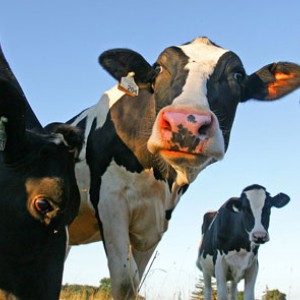 Magazine
MagazineCow powder
Raindrops slam against the windows of the little shop on Bay Street in Victoria. The glass is littered with white-lettered slogans boasting the lowest supplement prices in town. Inside I wipe my feet on the face of the store’s muscle-bound mascot, Popeye, who winks up at me from the doormat. The walls are lined with rows of rainbow tubs, all sealed and packed with supplement powders.

